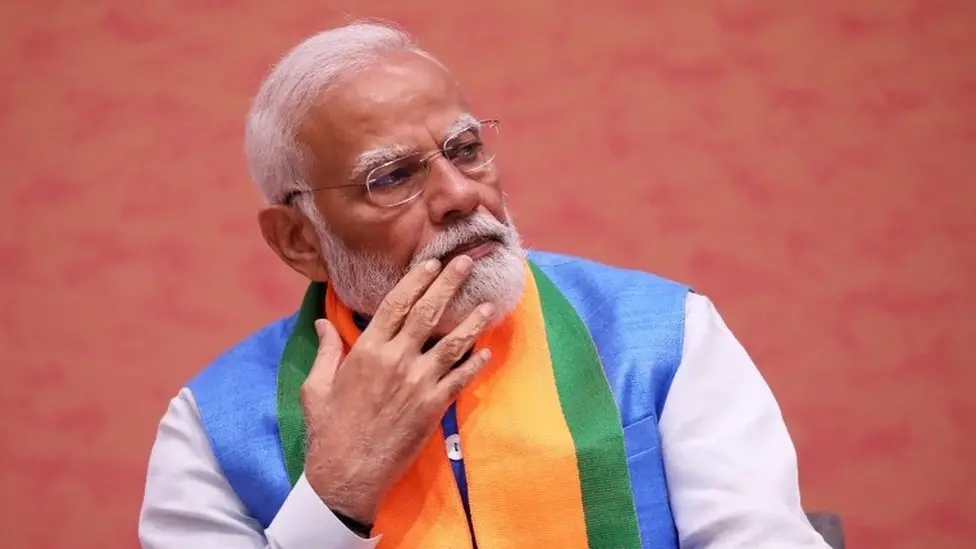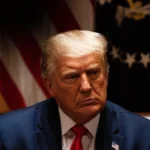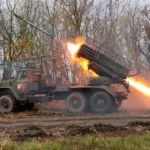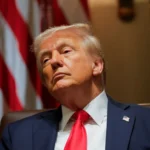At the start of 2024, Indian Prime Minister Narendra Modi was poised for triumph, basking in global recognition and preparing for an election that seemed destined to further cement his legacy. But as 2025 approaches, Modi finds himself grappling with a year marked by political, economic, and diplomatic setbacks that have weakened his position at home and abroad.
What was expected to be a year of consolidation for Modi has instead become a period of reflection on challenges that have exposed vulnerabilities in his administration. These include economic stagnation, corruption scandals involving close associates, deteriorating relations with neighbors, and political struggles that have chipped away at his dominance.
A Year of Setbacks
The tide began to turn in mid-2024 after Modi’s Bharatiya Janata Party (BJP) suffered significant losses in the national elections. Despite securing a third term, the BJP fell short of a majority and was forced to form a coalition for the first time in a decade, a stark contrast to its previous stronghold over Indian politics.
India’s economic growth also slowed to 5.4% in the third quarter, the weakest pace since 2022. Inflation surged, prompting the Reserve Bank of India to lower growth projections for the fiscal year to 6.6% from 7.2%. Global investors have pulled $10 billion from Indian markets since September, and the rupee has hit historic lows against the U.S. dollar, adding to the economic pressures.
On the diplomatic front, Modi’s influence in South Asia took a hit. Political upheavals in Bangladesh, where protests unseated ally Sheikh Hasina, and electoral victories for pro-China leaders in the Maldives further undermined India’s regional clout. Relations with Sri Lanka have also soured, as voters there gravitated toward leaders skeptical of both Indian and Chinese influence.
Scandals and International Scrutiny
Modi’s government has been tainted by allegations of corruption and criminal activities involving key allies. In October, U.S. prosecutors accused billionaire Gautam Adani—a close associate of Modi—of orchestrating a $250 million bribery scheme. The scandal has raised questions about the government’s ties to corporate interests and has shaken investor confidence in India’s global infrastructure projects.
Further complicating matters, allegations surfaced implicating Indian officials in a shocking murder-for-hire plot that first came to light in Canada and later extended to the U.S. The revelations have cast a shadow over India’s international image, straining relations with Western allies.
Challenges at Home
Domestically, Modi faces rising violence in Jammu and Kashmir, where his decision to revoke the region’s autonomy has led to renewed unrest. His relationship with the Rashtriya Swayamsevak Sangh (RSS), the BJP’s ideological parent, has also soured. The RSS criticized the BJP’s election strategy as overly reliant on Modi’s personal appeal, and its influence is likely to play a pivotal role in the upcoming BJP presidential election.
The political landscape is further complicated by a resurgent opposition coalition led by Congress leader Rahul Gandhi. The coalition’s surprising gains in the 2024 elections have emboldened regional leaders, creating friction within the alliance and presenting a formidable challenge to Modi’s leadership.
Glimmer of Hope on the Global Stage
Amid these setbacks, Modi has opportunities to rebuild his international standing. He is expected to host U.S. President Donald Trump in late 2025 for a summit of the Quad military partnership, comprising India, the U.S., Japan, and Australia. Trump’s transactional approach to diplomacy may offer Modi a chance to renegotiate trade terms and strengthen bilateral ties, despite India’s $40 billion trade surplus with the U.S. being a potential point of contention.
Modi also plans to visit China for the Shanghai Cooperation Organization summit, where a breakthrough in resolving the Himalayan border dispute could bolster his credentials as a global statesman.
Modi’s political dominance may have waned, but he remains the BJP’s most influential figure. The party has shifted its strategy to focus on welfare policies, such as cash handouts for women, to appeal to voters in upcoming state elections in Bihar and Delhi. These contests will serve as key indicators of Modi’s ability to navigate India’s increasingly fragmented political landscape.
While the challenges are significant, Modi’s resilience and political acumen have seen him weather storms before. As India enters 2025, the prime minister’s ability to address economic woes, rebuild trust with allies, and maintain his coalition will determine whether he can reclaim his stature as a transformative leader or if 2024 will be remembered as the year his political star began to dim.




